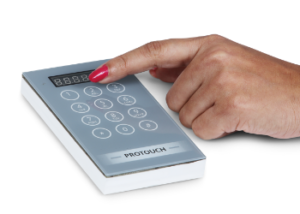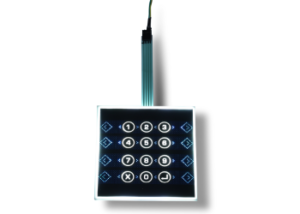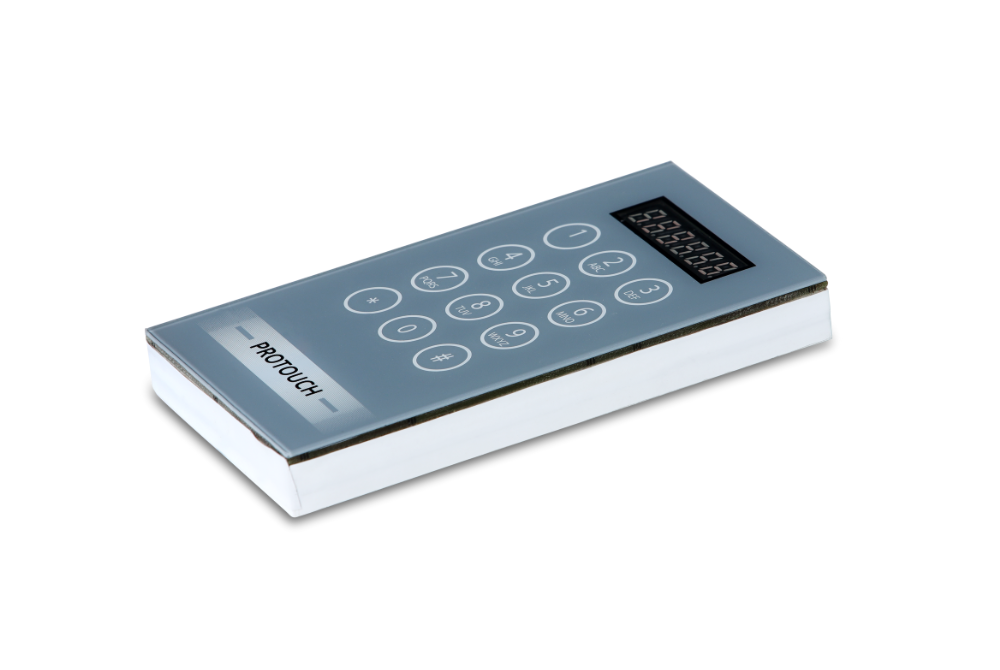A capacitive switch is a kind of touch-controlled electrical switch that works by estimating a change in capacitance.
It works similarly to an ordinary capacitive cell phone: when you contact the surface — given that you are not wearing gloves — a little electrical charge is moved from your body to the switch, which causes an adjustment of capacitance. The switch distinguishes this change, answering with an appropriate order.
After contacting a capacitive switch, this released electrical charge disturbs the switch’s electrical charge, resulting in an adjustment of capacitance. Because of this change, the switch can distinguish where and when the touch happened and how capacitive switches work.

A capacitive switch can either be a flexible and adaptable printed circuit or a sensing pad on a rigid PCB. A capacitive switch can consolidate a ton of usefulness that isn’t effectively accomplished with an ordinary membrane or mechanical switch.
Capacitive switches can have sensitive regions and intensity sliders in different shapes like a circle and fluctuating degrees of responsiveness for activation. You additionally can have choices like a proximity sensor integrated into a capacitive switch for additional efficient advantages.
As a capacitive switch is a sensor that faculties through a non-conductive surface, thicker substrates can be utilised, for example, acrylic materials or safety glass, for an extremely vigorous switch. This can likewise give the capacity for extra gasketing for extreme conditions and environments. Furthermore, capacitive switch technologies can achieve extremely complex backlighting solutions.

Furthermore, most capacitive switches can be characterised as having three layers:
-
- An upper graphics overlay layer
- A circuit layer (flexible printed circuit or printed circuit board)
- A supporter or backer layer
Generally, the overlay layer is composed of a strong material like glass or plastic.
How do capacitive switches work?
Although an exceptionally wide variety of numerous kinds of sensors and touch switches exists, they all share a few basic things in common.
A wide range of tactile sensors are receptive to some direct external stimulus – be it contact, touch, pressure or force – and their associations are generally formed or broken based on responsiveness to electricity, light (optical), magnetism, or some other kind of mechanical trigger. They all utilise a kind of on/off stimulus-to-response model.

It might be so that this will be an extraordinarily straightforward sequence of inputs and outputs – for instance, the singular keys on a PC are instances of very fundamentally basic touch switches, which answer direct physical strain to let the PC know which key is being pressed each time.
More complex variants of touch switches are viewed as on, say, cell phone screens – frequently integrating different highlights like capacitive detecting and haptic input – however, no matter what the sort of detecting/conveyance framework being sent, all work along similar fundamental standards as each other once the incitation has occurred.
As we’ve proactively noted, contact switches are near pervasive elements today, showing up on numerous very good quality present-day gadgets – however, maybe shockingly, they’re not that new an innovation. While contact switch designs have progressed essentially and been significantly refined with progressive jumps in plan and assembling techniques, the fundamentals of involving the human body as a guide – which it’s exceptional for – have been perceived and taken advantage of for a long time.

Temperature, obstruction and capacitance are a wide range of touch switch components that function efficiently when an individual or a useful switch control object works. How a specific touch switch works are subject to the sort of touch switch innovation referred to. Thus in the accompanying segment, we’ll investigate a portion of the more normal touch switches sold.
To put it as guidance of instructions, a capacitive switch functions in the following way:
- The user has to touch the glass panel.
- The printed circuit panel, which is present around the outer viewing area incorporated in the glass panel, creates an electrical charge across the entire surface.
- It altogether results in a reduction in capacitance and, after that, allows for the system to identify the touchpoint. Multiple touchpoints can be discerned, allowing for touch pinch and subsequent spread.
Benefits of using a capacitive switch:
There are various advantages which make a capacitive switch a better option than other switches, and they are as follows:
-
- There are absolutely no mechanical components in a capacitive switch, and hence it leads to a longer lifespan as compared to its mechanical counterpart.
- Capacitive switches can withstand and bear some extreme environments, including outdoor conditions. Hence, if the intrusion of dust, dirt or moisture is a concern, a capacitive switch is probably the best go-to for an electrical switch.
- Capacitive switches can be used in many applications, including smartphones, tablets, vending machines, human-machine interfaces (HMIs), appliances, infotainment centres, industrial controls, and more. Furthermore, they also support the integration of several other features like light-emitting diode (LED) backlights.
- It has intricate backlighting possibilities.
- It implies a type of functionality which is not easily provided by other switches.
- Possibility of proximity or subsurface sensing.
- You can add your tinge to it through intricate graphical layer design and custom colour matching.
- Capacitive switches can also have an inbuilt proximity sensing option to enhance your product’s functionality.
- Capacitive switches can feature unique switch functionalities such as wheels, sliders, locking keys, and other features.
- Special capacitive switches can be built using metal-over-cap technology that enables conductive materials over the sensor area.
- Through haptics and several other methods, tactile feedback can be achieved on a capacitive switch.
- Key areas can be raised, embossed, or lowered, to give guidance about where the key is.
- Custom backlighting solutions are also a possibility.
- Display windows can be incorporated in various shapes and sizes, and they can also be tinted or clear.
- Capacitive switches can also be built with RFI, EMI, and ESD layers to protect your product.
- Capacitive switch assemblies can function as stand-alone flexible circuits or be built on rigid backplates, including steel, aluminium or other options.
- Capacitive switches can also function as sensing pads on rigid PCBs, consequently functioning as a rigid backplate.
- A wide range of terminations can be used to mate a capacitive switch with your product.
Owing to its wide range of distinct benefits, you should surely opt for capacitive switches. For detailed enquiry please contact us.


Excellent blog post. I definitely appreciate this website. Continue the good work!
Hi Neat post There is a problem along with your website in internet explorer would test this IE still is the market chief and a good section of other folks will pass over your magnificent writing due to this problem
I loved even more than you will get done right here. The picture is nice, and your writing is stylish, but you seem to be rushing through it, and I think you should give it again soon. I’ll probably do that again and again if you protect this hike.
Hi i think that i saw you visited my web site thus i came to Return the favore Im attempting to find things to enhance my siteI suppose its ok to use a few of your ideas
helloI really like your writing so a lot share we keep up a correspondence extra approximately your post on AOL I need an expert in this house to unravel my problem May be that is you Taking a look ahead to see you
Simply wish to say your article is as amazing The clearness in your post is just nice and i could assume youre an expert on this subject Well with your permission let me to grab your feed to keep updated with forthcoming post Thanks a million and please carry on the gratifying work
Hi i think that i saw you visited my web site thus i came to Return the favore Im attempting to find things to enhance my siteI suppose its ok to use a few of your ideas
Your ability to distill complex concepts into digestible nuggets of wisdom is truly remarkable. I always come away from your blog feeling enlightened and inspired. Keep up the phenomenal work!
I was recommended this website by my cousin I am not sure whether this post is written by him as nobody else know such detailed about my difficulty You are wonderful Thanks
helloI like your writing very so much proportion we keep up a correspondence extra approximately your post on AOL I need an expert in this space to unravel my problem May be that is you Taking a look forward to see you
Your detailed research adds a lot of value to your posts.